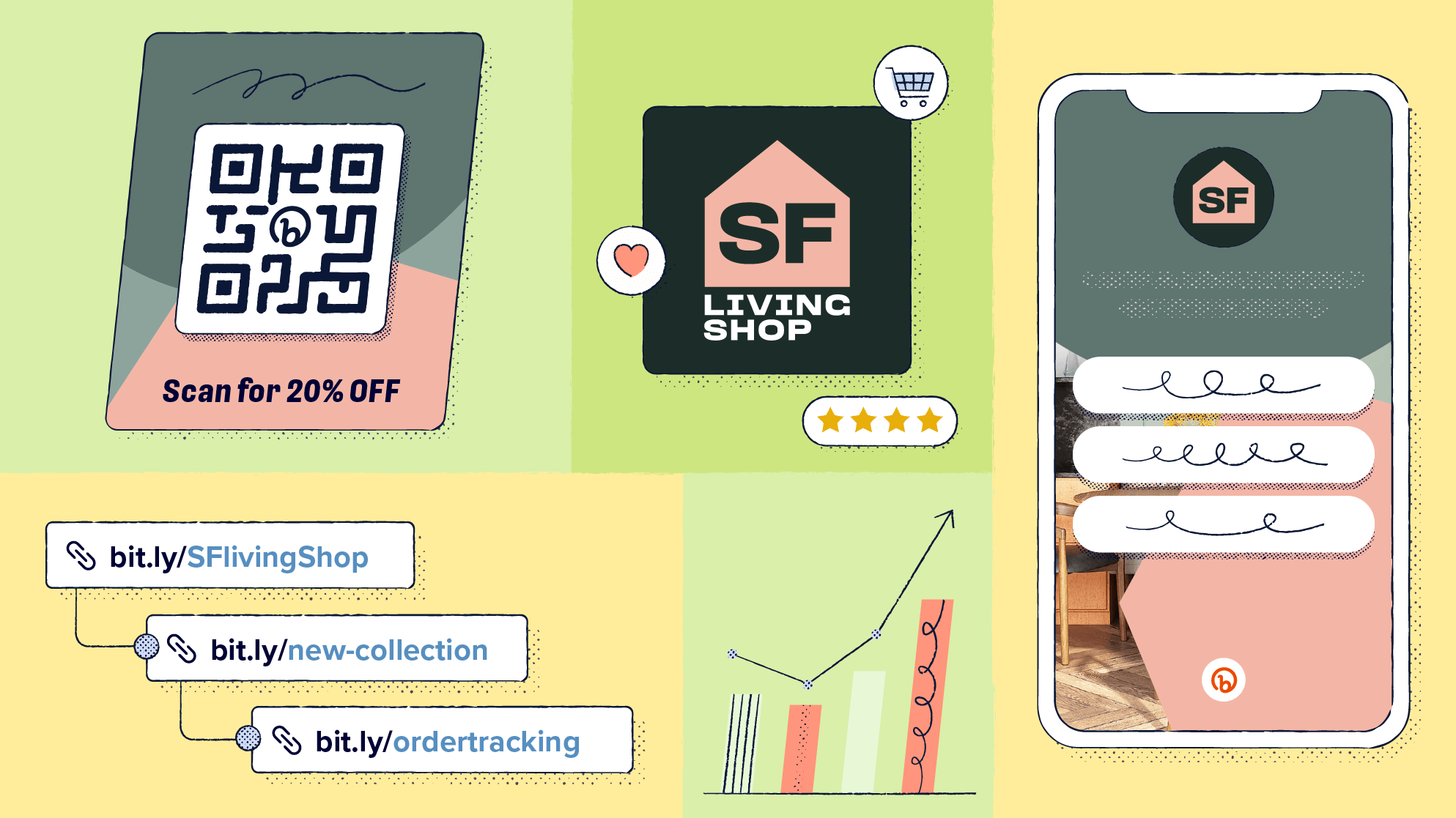
What’s on your marketing to-do list today? Whether it’s coming up with ways to attract new customers, engaging with patrons both online and in-person, or even successfully cross-selling your products, chances are that list is getting pretty long. Each of these tasks is difficult by itself, but for retail marketers, they’re all part of a day’s work.
To win over customers in an increasingly competitive landscape, retailers are turning to technology like QR Codes to help bridge in-store experiences with the digital world. Engaging with shoppers in-store as they leisurely browse is key for creating lasting customer connections that extend far beyond checkout.
Learn how to tap into in-store engagement opportunities one scan at a time, and explore the innovative ways retail brands are already supercharging their marketing strategies with QR Codes. Let’s get into it!
What is in-store marketing?
In-store marketing refers to the strategies and tactics retailers use within their physical retail locations to enhance shopping experiences for customers. It typically involves using signage, displays, promotions, product placements, and technology to attract, engage, inform, and ultimately persuade customers to make purchases in-store.
Retailers that effectively leverage in-store marketing strategies create an environment that helps customers along their journey to purchase. The goal is to ultimately increase sales, drive brand loyalty, and improve customer satisfaction.
Cracking the code on in-store retail marketing
Retail has always been an “in-the-moment” experience. Shoppers step into your physical location (or step through your digital doorway), ready to browse or eager to buy.
For every second of this journey, you’re on a mission to capture their attention and compel them to purchase. And while it’s essential to have incredible products that practically jump off the shelves, that’s not necessarily enough to get customers to buy once, let alone become lifelong fans.
The challenge retail marketers face today is engaging shoppers moment by moment with information and experiences they actually want. That’s how you beat your competition and build stronger relationships with customers.
Retailers need to rethink their old-school marketing tactics and embrace technology to bridge this gap—and QR Codes are leading the way for businesses big and small. With a quick scan from their smartphones, shoppers can unlock all-new levels of connection to the brands they love or are even learning about for the first time.
QR Codes are quickly becoming one of the most powerful tools for marketers across all industries. According to our 2023 QR Code Trends Report, QR Code creations grew by a whopping 88% year-over-year within the retail industry alone. Don’t worry, if you haven’t started incorporating QR Codes into your retail marketing mix it’s never too late to get in on the action. Let’s explore some of the key benefits QR Codes bring to the table for retailers big and small.
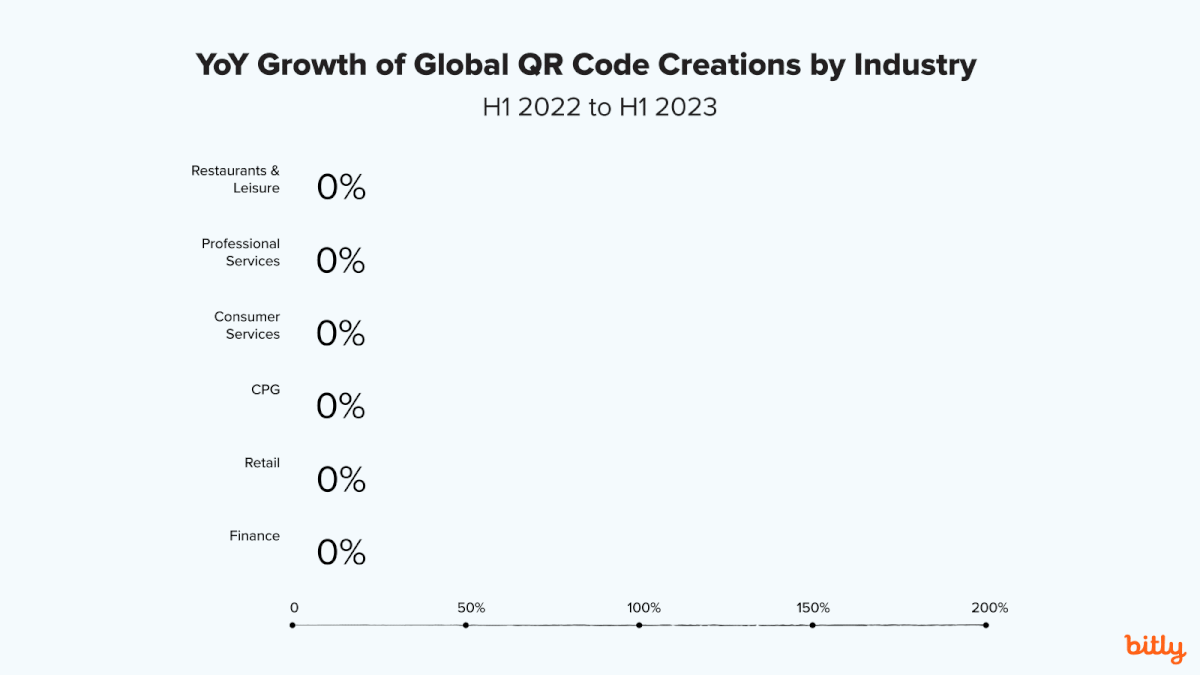
Benefits of QR Codes for retail
QR Codes are a powerful marketing tool, driving interactive customer experiences and deeper connections. They’re a marketer’s best friend, with the flexibility and functionality you need to meet your goals. Here are three key benefits that make QR Codes an essential tool in your marketing tech stack.
1. Real-time updates
Ready for a retail marketing tactic as quick-thinking and adaptable as you are? QR Codes get the job done. Traditional marketing channels—like direct mail, printed flyers, or billboards—were once thought of as “set in stone” after being printed. Modern marketers, however, are looking for ways to pivot and make updates in real time across their marketing channels based on data and as customer preferences evolve.
Dynamic QR Codes fit the bill. You can update your URLs as needed so that when your marketing goals change, your QR Code destination changes, too. This not only lets you update information or promote seasonal items and discounts with the same QR Code, but it also means you can be more nimble and adjust your strategy based on what’s working best. If you run an A/B test, for example, and find that certain messaging resonates better with customers, you can update your QR Code destinations accordingly with just a few clicks.
2. Flexible design
The secret to staying on-brand across your marketing channels in-store is bringing brand elements like your logo and colors to every customer touchpoint—and QR Codes let you do just that!
With Bitly, you can create and customize QR Codes that look and feel like your brand, from the pattern style to the frame around the code and the colors throughout.
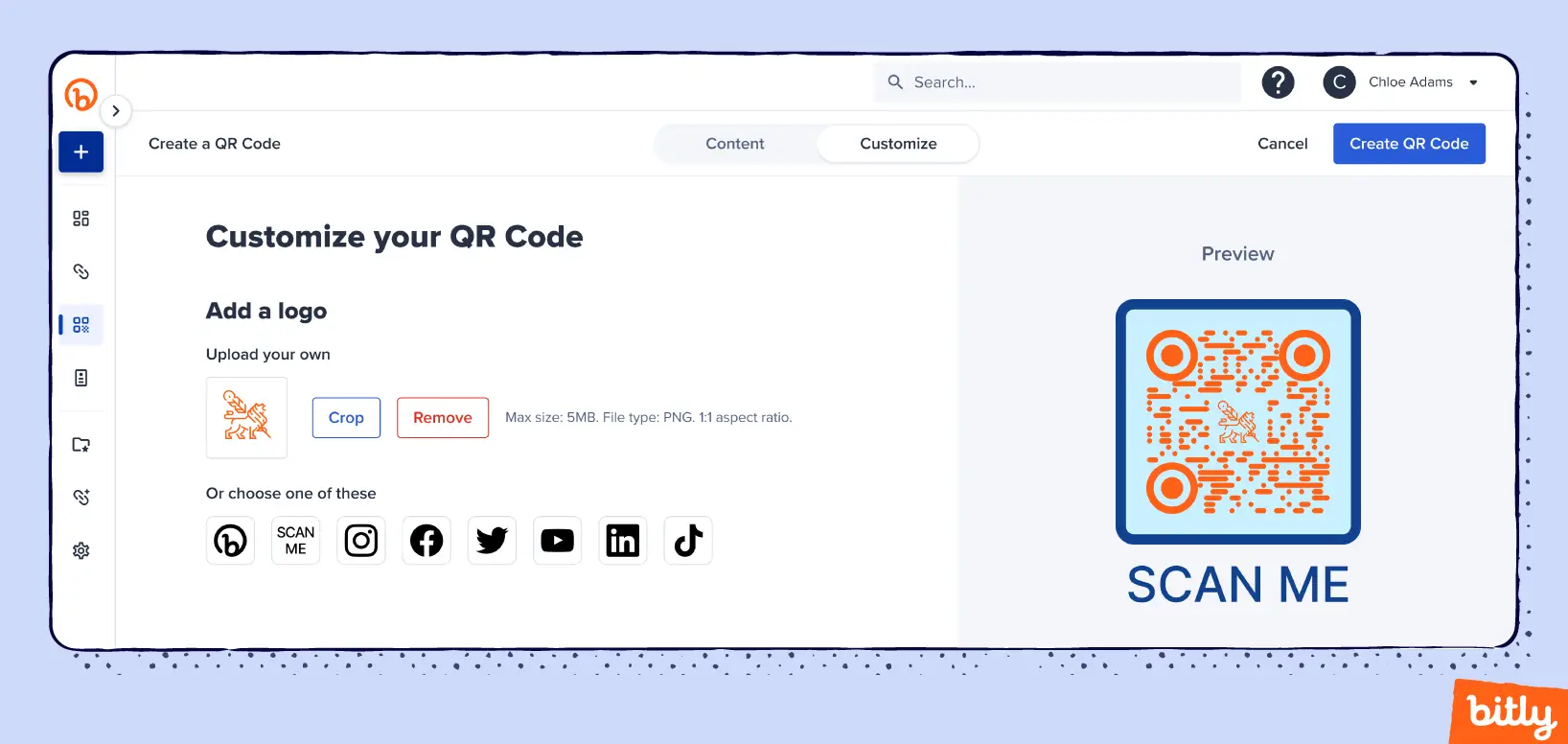
Plus, with the Bitly and Canva integration, you can now make design changes to your QR Codes on the fly in Canva, add QR Codes to any Canva design, and create a call to action that stands out and gets people excited to scan.
3. Accurate measurements
When you can measure something, you can make it better. Measurable marketing tactics are priceless for understanding a campaign’s performance, showing your impact, and growing over time. With real-time data on how many times a QR Code is scanned and audience insights like location and browser information, QR Codes offer analytics you need to assess and iterate on your campaigns.
Learning about the kinds of questions customers have and what offers resonate with them while shopping can be a challenge at scale. By capturing scan information one customer at a time, marketers can use QR Codes to gather essential details about their audience. From there, they can build better messaging and craft offers that shoppers connect with.
Using QR Codes to connect with shoppers
Your marketing efforts shouldn’t stop once you get someone in the door—it’s really just the beginning of the journey! This is the perfect time to start building relationships with customers that last beyond their current visit. You can use QR Codes to kick off these connections by sharing more information about your store or products, sparking interactions that surprise and delight customers, and encouraging someone to make a purchase in-store by offering up a coupon code or discount.
From displays and signage to hang tags and receipts, there are so many opportunities to integrate QR Codes into your store that meet an immediate customer need. Think about where customers are already naturally looking when considering where to strategically place QR Codes in your store. After all, a thoughtfully placed QR Code can anticipate a need, capture attention, transform a poor experience, or even make someone feel special.
So, how can retail marketers use QR Codes to tap into in-store engagement with customers beyond the scan? Here are a few ways that QR Codes can help you reach your goals and give your in-store marketing a boost.
Product interactions
As customers browse through your store, your goal should be to provide them with all the information they need to make an informed decision—ideally one that leads to a successful purchase!
Amidst crowded shelves and limited package real estate, a QR Code expands your potential to offer in-depth information with just a simple scan. Customers can then access a digital experience that helps them understand more about the product before buying. You can:
- Show shoppers how easy-to-use your product is with a short demo video that lets them imagine themselves using your product
- Take buyers to high-quality 360-degree photos or videos touring them around your product, especially if they can’t take your product out of the package before buying
- Tap into the power of Augmented Reality (AR) by using QR Codes to offer virtual try-on experiences for products like clothing or make-up
QR Codes offer instant digital experiences that help customers make the best possible purchase and deepen their confidence in your brand and products. To make every in-store interaction more dynamic, North America’s largest electric bike brand, Rad Power Bikes, uses Bitly QR Codes on signage in retail locations to transform ordinary product labels into gateways to online information.
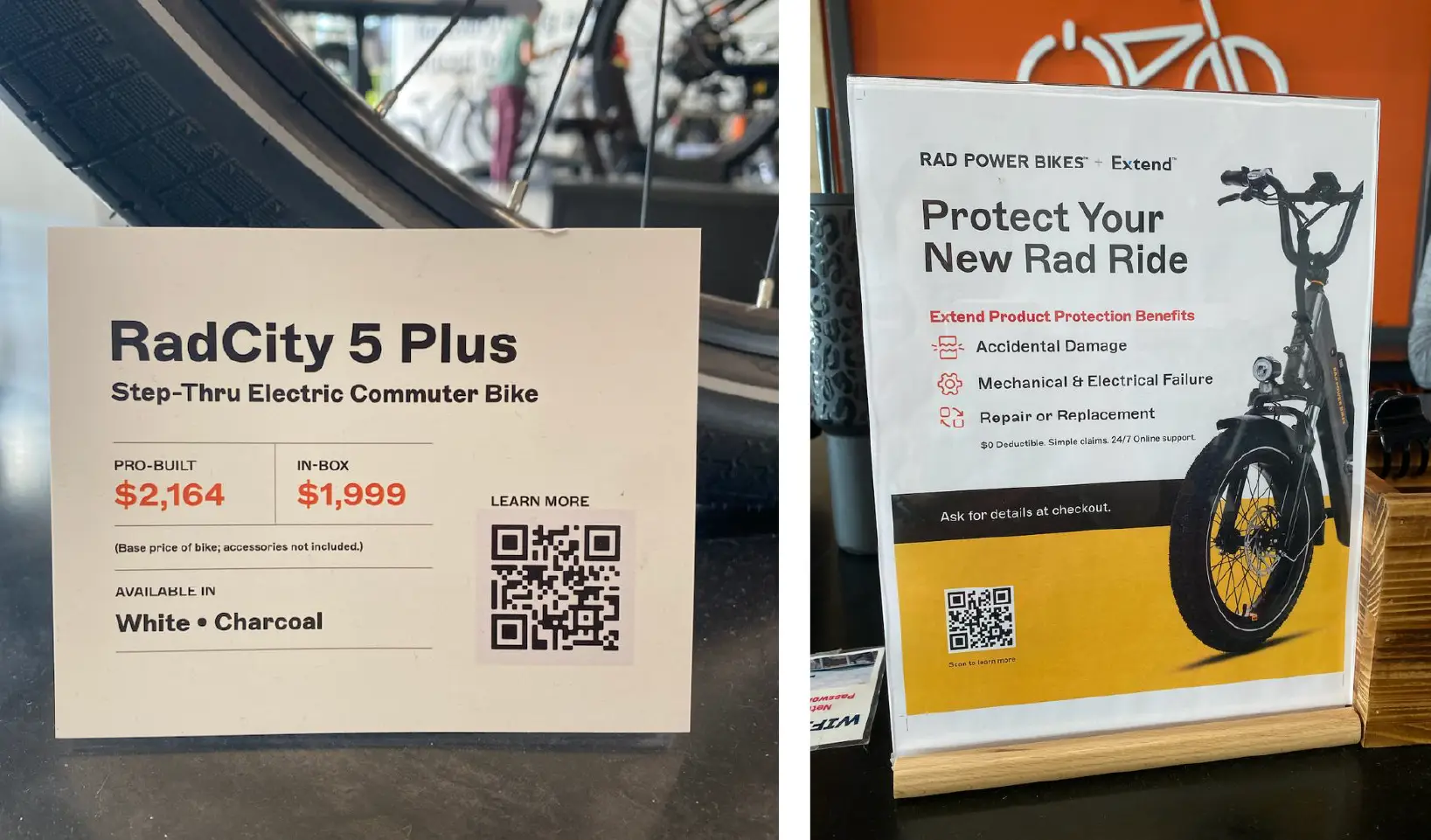
Experiential shopping
Brands that build lasting customer relationships connect beyond the shelves, offering engaging, fun, and unique experiences outside the product itself.
Contests and giveaways have long been a fan-favorite way to stand out to customers and capture their information. Social media has turned contests into user-generated content (UGC) machines, too, for even more marketing power. Drive contest entries in-store with QR Codes that take shoppers straight to prize details or instructions on how to enter.
Offer a playful, memorable shopping experience by using QR Codes for gamification. Sprinkle opportunities to scan across stores and products to unlock special giveaways, discounts, or exclusive content. These experiences keep shoppers’ attention on your brand and expose them to new products.
Experiential shopping can also look like more “traditional” ways of building customer relationships like loyalty programs—and QR Codes can help here, too. Make it easy for customers to sign up, check on their points, or redeem what they’ve earned. Quick and easy access to loyalty points can remind customers how close they are to milestones and just might sell them on buying another item.
Use QR Codes to immerse shoppers in storytelling. Share behind-the-scenes videos about your sustainability practices or teach them how your brand gives back through nonprofit partnerships. These interactions show your values and turn a purchase into a point of connection.
Endless aisles
For brick-and-mortar stores, finding the perfect inventory balance is an enduring challenge. But endless aisles have emerged as an innovative solution, powered by solutions like QR Codes.
When an item is out of stock, endless aisles let in-store shoppers use online channels to order those items to be shipped right to them. Stores can offer self-serve kiosks or, for a quicker and more cost-effective solution, provide QR Codes that take customers to an online order experience. There, they can purchase the item they need or browse additional options.
Endless aisles transform retail inventory management by letting stores keep fewer products on shelves, while still being able to sell those items to customers. Endless aisles also build customer trust and loyalty through an all-around improved shopping experience. By giving shoppers the chance to interact with products before buying online and solving out-of-stock challenges, you build a deeper connection and make customers feel seen and heard.
From a marketing standpoint, using QR Codes to offer endless aisles doesn’t just sell more products and improve inventory—it also fosters lasting relationships with your brand that extend far beyond a single visit to your store.
In-store QR Code examples to get you inspired
QR Codes are a powerful tool for turning passive visitors into actively engaged patrons. But don’t just take our word for it—look to these three brands and their in-store marketing success stories for some inspiration!
Staples: Driving sales through endless aisles
Staples is hoping its customers press that big red “That was easy” button at every step of their shopping journey. The office supply retailer has doubled down on its in-store experience for customers, with kiosks that offer access to thousands of online products that customers can buy online and pick up in-store (BOPIS).
Through their self-service process, shoppers scan product QR Codes and then move to the Point of Sale (POS) system to order online items and check out.
Curology: Building loyalty and boosting conversions
When skincare subscription brand Curology started adding QR Codes to its marketing strategy, the company knew that the possibilities were endless. So in 2023, when the brand’s non-prescription skincare essentials became available at Target, they decided to place Bitly QR Codes on hang tags in-store to point customers to their personalized skincare offer online.
Across all of their QR Code placements, Curology customers scan to:
- Add a new product to their next subscription box
- Get a unique link to refer a friend and receive $20 toward their next box
- View personalized skincare recommendations
- Start their free 30-day trial
The team at Curology has seen strong results across all of these QR Code integrations, especially through advertising their trial offer. As a result, Bitly QR Codes have become the brand’s number-one driver of retail-to-direct consumer conversions—now that’s impressive!
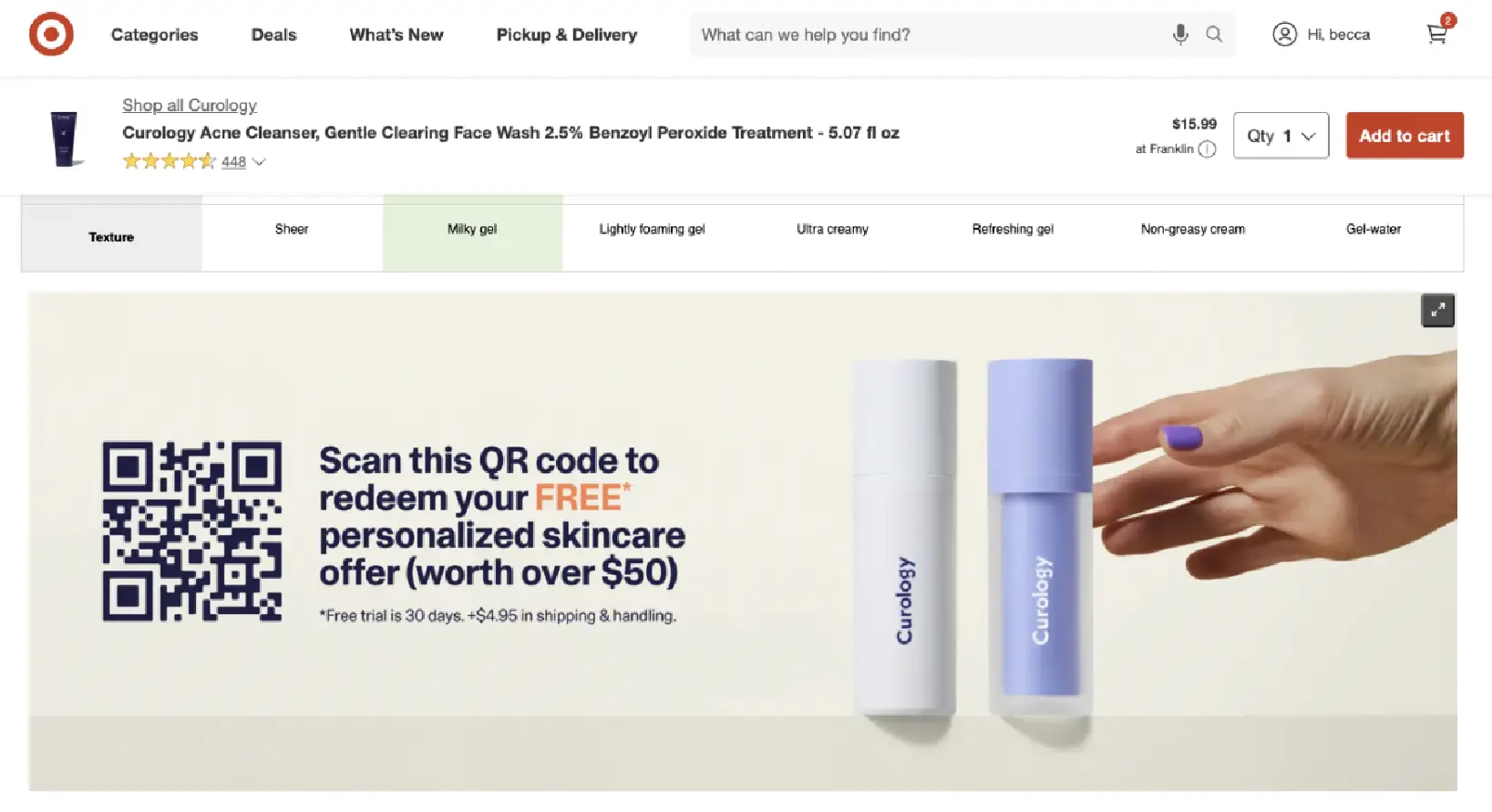
MOSCOT: Boosting revenue through try-ons
You simply have to try some items before you buy them. Luxury eyewear brand, MOSCOT, wanted to make this process as easy as possible with AR try-on experiences that let customers try out frames and styles straight from their smartphones.
The brand uses QR Codes on store windows and throughout their shops to take customers—and folks casually strolling down the street—to a try-on tool in their mobile browser. Customers get a feel for their products in real-time, like different colors, sizes, and styles, and MOSCOT wins big, too—the brand saw a 174% increase in revenue per visit among AR users.
Improve your in-store retail marketing strategy
Day in and day out, retail marketers do it all, amidst stiff competition and rising customer expectations. To reach shoppers in real-time and build lasting connections with your brand, you need solutions that meet customers right where they are and give them just what they need.
Use QR Codes to bridge offline and online experiences, and find new and creative ways to connect with customers through every scan. With flexibility, real-time data, and countless ways to use them, QR Codes are the secret to the in-store marketing shoppers love to engage with and that your business needs to thrive.